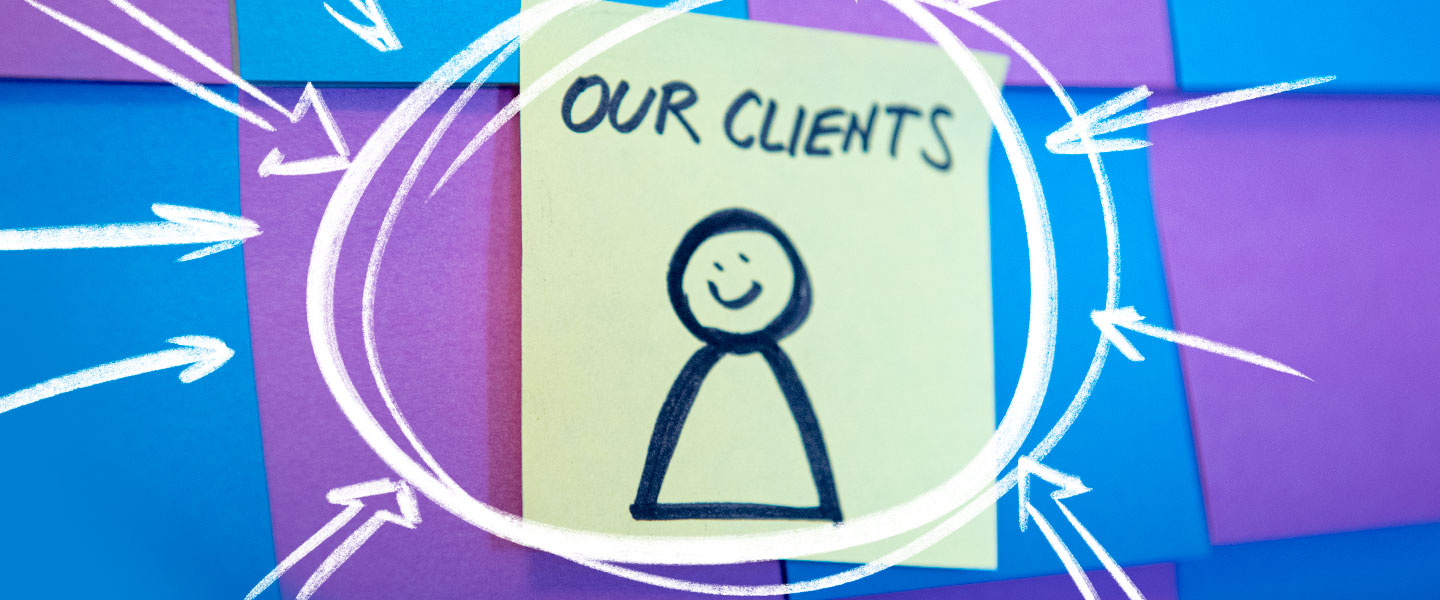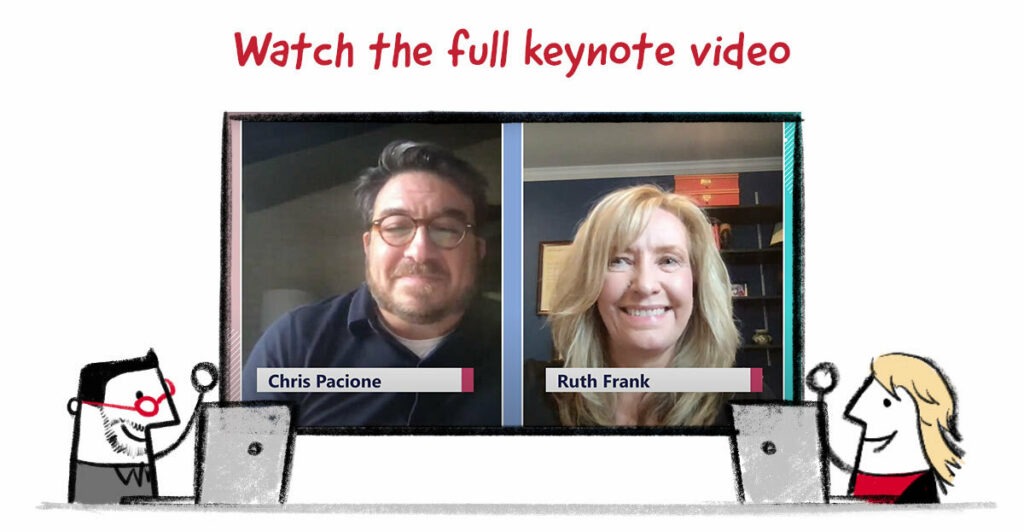In 2019, Pitney Bowes was completing a sweeping digital and business transformation as it neared its 100th anniversary in business. But something was off. Client feedback indicated the company was delivering experiences that fell short.
The missing piece? “A true client focus,” recalled Ruth Frank, Pitney Bowes’ vice president, experience design. “Clients were getting frustrated and we knew that, without action, they would start to leave.”
So, Pitney Bowes embarked on phase two of its transformation journey: putting a laser focus on clients and building what has blossomed into an award-winning client experience program, based on design thinking.
So far, the company is seeing significant impact as the program heightens internal energy and enthusiasm, deepens employee engagement, and generates measurable outcomes for clients and Pitney Bowes teams alike. Those outcomes include:
- Deeper empathy and human focus
- More effective collaboration and internal alignment
- More input from clients
- Reduced development time
- Faster time to market
“It’s exciting to see the organization really embrace design thinking in many ways,” said Frank, whose team is guiding the customer experience initiative. “We are shifting culture and seeing results.”
Building out a vision of CX excellence
Frank shared the story of the company’s journey to customer experience excellence in a keynote at Design Thinking Virtual Experience 2020. She co-presented with Chris Pacione, CEO of LUMA Institute, which Pitney Bowes selected as its design thinking partner. (Download keynote slides as a PDF and watch the full keynote video by clicking on the following photo.)
Founded in 1920, Pitney Bowes is a global technology company that provides commerce solutions in the areas of e-commerce, shipping, mailing and financial services.
The company supports more than 750,000 businesses worldwide and serves 90% of the Fortune 500. Pitney Bowes’ 2020 revenue was $3.6 billion, and the company employs more than 11,000 people worldwide.
To launch the customer experience program, Frank and her team needed three things: a clear strategy, support from top executives and a design thinking partner. As next steps they:
- Built internal support by citing credible industry reports that tied customer experience to tangible results. They pointed to sources like Forrester Research Inc., which found that a group of CX-leading organizations outgrew the revenue of their CX-lagging competitors.
- Outlined a company-wide vision of CX excellence and the key capabilities and components Pitney Bowes would need to make it a reality, including reporting, collaboration and culture.
- Found the right partner in LUMA, which teaches a unique system of human-centered design and brings deep experience introducing and scaling design thinking within large global organizations and at all levels, not just leadership.
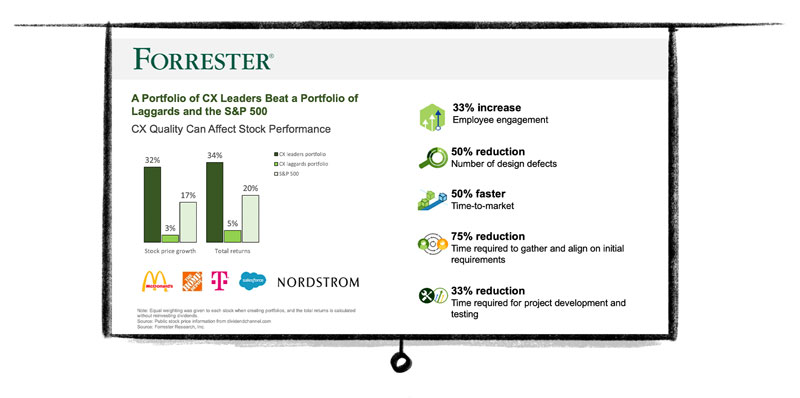
Launching and scaling a client-centered innovation program
The team kicked off pilot programs for 40 participants, who attended two-day workshops followed by a series of coaching sessions, all with LUMA instructors. The groups included people who held key roles from a variety of departments to reflect a strategy of “democratizing design thinking.” Toward that goal, the team chose not to include any Pitney Bowes trained designers in the pilots.
LUMA’s approach proved to be a good fit with Pitney Bowes’ teams and company culture.
“LUMA helps us by converting design thinking behaviors into concrete, actionable ways of working that we can apply to both major strategic projects and to day-to-day work,” Frank said.
An early win: one team used design thinking methods from the LUMA System to reduce the complexity of a client onboarding experience from two days to 10 minutes.
With a few tweaks based on feedback and aha moments from participants, the program was ready to scale.
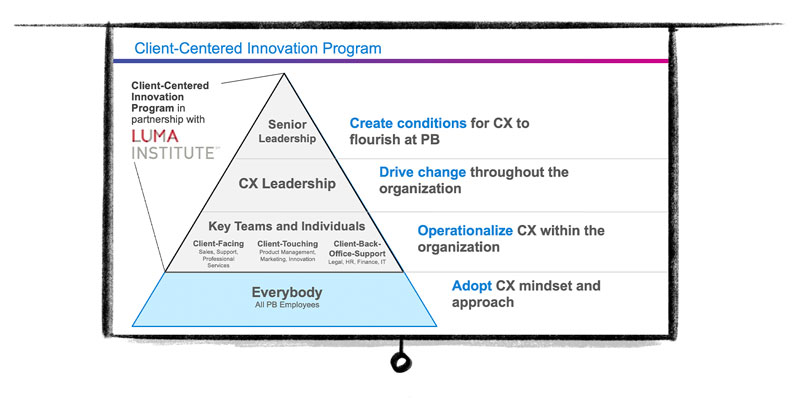
As more people started to use design thinking techniques and activities within their daily work, enthusiasm grew. Frank’s team used storytelling to share anecdotes, and they included outcomes from prior workshops to keep the program highly relevant to Pitney Bowes. Participants felt empowered and excited.
By mid-2020, Pitney Bowes had built internal capability with more than 120 design thinking practitioners, a smaller group of facilitators, and several instructors to develop in-house expertise for Pitney Bowes to truly own the program.
For LUMA, success as a partner becomes apparent “when clients are empowered to the degree that they stop relying on us for training and begin to fine-tune their programs,” said Pacione, LUMA’s CEO.
“We have found that companies trying to foster design thinking across their work culture fare much better when they shape how they are teaching, to conform to their specific culture and industry,” he explained.
Seeing results for the Pitney Bowes team — and their customers
So far, the customer experience program is yielding measurable — and impressive — results, for both Pitney Bowes’ clients and the company’s workforce.
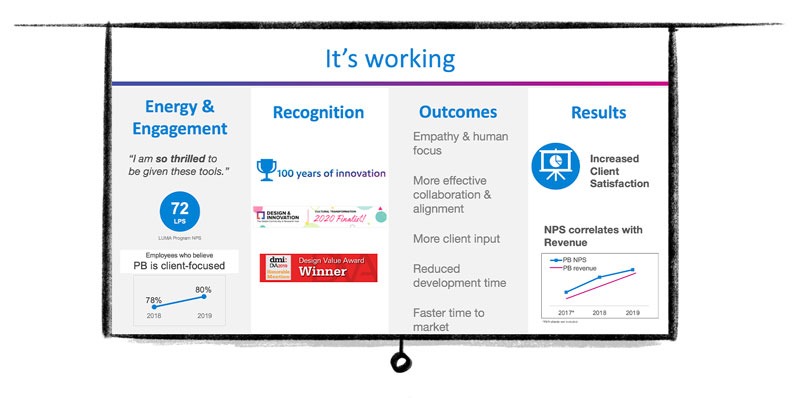
“We see tremendous energy and momentum,” Frank said. “People love it.”
The program is winning internal and external recognition, including Pitney Bowes’ own innovation of the year program, and a Design Value Award from the Design Management Institute in 2019.
And, the program is generating the meaningful outcomes that Frank cited — from deeper empathy and more client input to reduced development time and faster time to market — that now are delivering measurable value to the company.
“These outcomes are helping to improve our relationships with our existing clients, acquire new clients and generate revenue,” Frank said. “It’s working.”
As another example of success, Pitney Bowes teams used design thinking to devise solutions for new and urgent challenges due to the COVID-19 pandemic. Massive spikes in demand for e-commerce services were causing shipping delays and unprecedented rates of customer inquiries. Call handling time went up and team members were leaving.
One call center manager who’d completed the design thinking program engaged every member of his team in contributing ideas for the group to test, improve and implement. As a result, call handling time went down — and so did employee turnover.
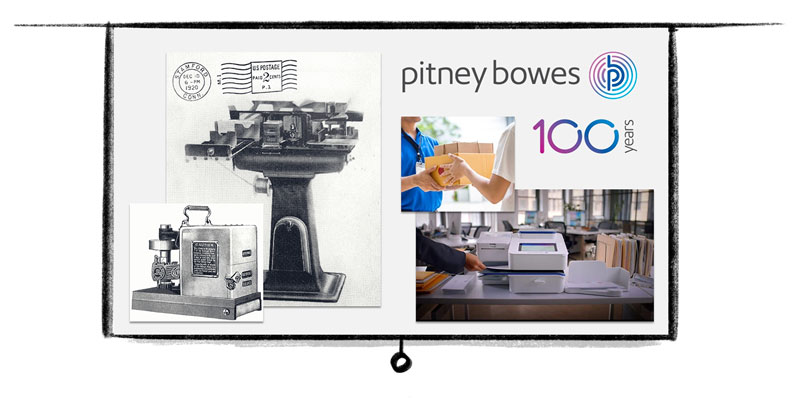
Lessons learned on the journey to CX excellence
As additional insights, Frank shared three key lessons from their experience.
- Go deep before broad. “We see more success in selecting and developing teams in key parts of the business deeply, versus a broader set of individuals scattered across the organization.”
- Meet teams where they are. “Some teams have experience and are ready to learn and apply quickly. For other teams, the introduction done well is just what they need. Other teams may benefit from on-going coaching.”
- Celebrate every success. “The big bang successes with clear business outcomes are easy to celebrate. But it’s equally important to celebrate smaller steps, those learnings and failures along the way.”

